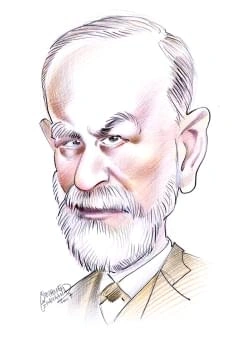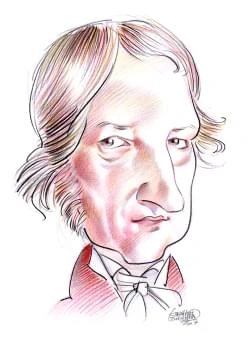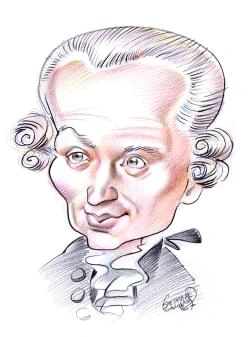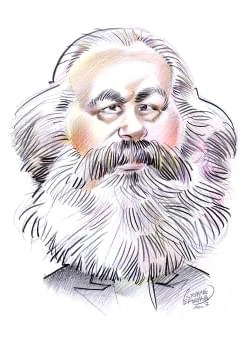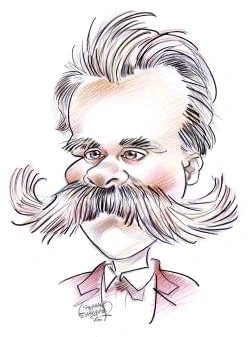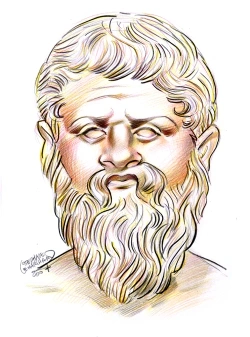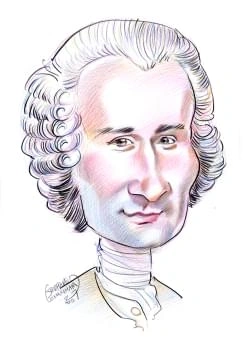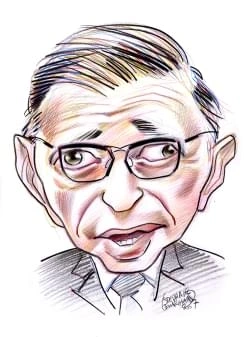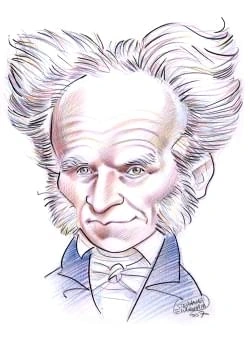111 résultats pour "earlier"
-
Yemen - country.
port. Al Ḩudaydah (155,110), in the Tih āmah, is the second largest port. Ta‘izz, (178,043), in the highlands above Aden, is an important commercial and light industrialcenter. Among Yemen’s larger towns are Şa‘dah, far to the north; Dham ār, Yarim, and Ibb, in the middle region; Al Mukall ā, on the southern coast; and in Hadhramaut,the towns of Shib ām, Say‘ ūn, and Tar īm. C Language Nearly all Yemenis speak Arabic. However, the country’s extremely rugged terrain, widely separated population...
-
Korean War.
During the summer of 1949, South Korea had expanded its army to about 90,000 troops, a strength the North matched in early 1950. The North had about 150 SovietT-34 tanks and a small but effective air force of 70 fighters and 62 light bombers—weapons either left behind when Soviet troops evacuated Korea or bought from theUSSR and China in 1949 and 1950. By June 1950 American data showed the two armies at about equal strength, with roughly equal numbers amassed along the 38thparallel. However, thi...
-
Korean War - History.
During the summer of 1949, South Korea had expanded its army to about 90,000 troops, a strength the North matched in early 1950. The North had about 150 SovietT-34 tanks and a small but effective air force of 70 fighters and 62 light bombers—weapons either left behind when Soviet troops evacuated Korea or bought from theUSSR and China in 1949 and 1950. By June 1950 American data showed the two armies at about equal strength, with roughly equal numbers amassed along the 38thparallel. However, thi...
-
Korean War - U.
During the summer of 1949, South Korea had expanded its army to about 90,000 troops, a strength the North matched in early 1950. The North had about 150 SovietT-34 tanks and a small but effective air force of 70 fighters and 62 light bombers—weapons either left behind when Soviet troops evacuated Korea or bought from theUSSR and China in 1949 and 1950. By June 1950 American data showed the two armies at about equal strength, with roughly equal numbers amassed along the 38thparallel. However, thi...
-
First Americans.
bones and artifacts helped 19th-century archaeologists establish the age of ancient human encampments in Europe. Yet, search as they might, American archaeologists found no comparable evidence of a Pleistocene-era human presence. But several sites revealed stone artifacts thatsome scholars believed looked similar to the ancient stone tools found in Europe. On the basis of this similarity, these experts claimed the American artifacts must be asold. By the 1890s, however, other scholars had challe...
-
First Americans - Canadian History.
bones and artifacts helped 19th-century archaeologists establish the age of ancient human encampments in Europe. Yet, search as they might, American archaeologists found no comparable evidence of a Pleistocene-era human presence. But several sites revealed stone artifacts thatsome scholars believed looked similar to the ancient stone tools found in Europe. On the basis of this similarity, these experts claimed the American artifacts must be asold. By the 1890s, however, other scholars had challe...
-
Native American Art.
folding, braiding or weaving, could also be sewn onto the hide. The production of decorated clothing and bags increased after contact with Europeans as a greater variety of textiles and other materials became available throughtrade. Imported glass beads inspired native women, who quickly adapted quillwork techniques for the creation of beaded apparel. European curvilinear and floraldesigns of the 19th century proved as meaningful for the native women who worked with them as they were for the non...
-
Marriage.
In many traditional societies, marriage typically involved transfers of property from the parents to their marrying children or from one set of parents to the other. Thesecustoms persist in some places today and are part of the tradition of arranged marriages. For example, in some cultures the bride’s parents may give property (knownas a dowry) to the new couple. The practice of giving dowries has been common in countries such as Greece, Egypt, India, and China from ancient times until thepresen...
-
-
American Westward Movement - U.
British expansion. However, Native Americans of the Great Lakes and Ohio Valley lashed out against the English in an attempt to preserve their independence, theirland, and their way of life. With the Ottawa chief Pontiac as their most visible leader, the tribes waged a bloody and costly war. As a result, the British governmentdecided to keep the white settlers apart from the Native Americans. It issued the Royal Proclamation of 1763, banning all white settlement beyond the Appalachians andstatin...
-
Psychotherapy.
Other managed-care companies pay therapists a set fee to meet with a client for up to a specified maximum number of sessions depending on the nature of theproblem, free of interference from case reviewers. For example, a managed-care firm may pay a therapist $200 to hold up to eight sessions with a person. If the clientuses all eight sessions, the therapist normally loses money. But if treatment stops after two or three sessions, the therapist makes a profit. This relatively new system iscontrov...
-
South Carolina - geography.
(20° F) or lower, occur each winter. July temperatures average 27° C (80° F) in most of the state, with temperatures in the lower 20°s C (lower 70°s F) in themountains. Except in the mountains, summer daytime highs throughout South Carolina often enter the lower 30°s C (lower 90°s F). The temperature in July in Columbiaranges from 21° to 33° C (70° to 92° F). D2 Precipitation Central South Carolina has an average annual precipitation (both rainfall and snowfall) of 1,140 mm (45 in). Greater amo...
-
South Carolina - USA History.
(20° F) or lower, occur each winter. July temperatures average 27° C (80° F) in most of the state, with temperatures in the lower 20°s C (lower 70°s F) in themountains. Except in the mountains, summer daytime highs throughout South Carolina often enter the lower 30°s C (lower 90°s F). The temperature in July in Columbiaranges from 21° to 33° C (70° to 92° F). D2 Precipitation Central South Carolina has an average annual precipitation (both rainfall and snowfall) of 1,140 mm (45 in). Greater amo...
-
Henry Morton Stanley.
VI EVALUATION If Stanley was among the most ruthless and driven of Europe’s African explorers, he also was among the most accomplished. Much of what the Western world came toknow about Central Africa, including the drainage of its lakes and rivers, was derived from Stanley’s explorations. Moreover, he was one of the central figures in eventsleading to the Scramble for Africa. His call for the Christianizing of Africans and for the development of commerce with the interior echoed the call Livin...
-
Henry Morton Stanley - explorer.
VI EVALUATION If Stanley was among the most ruthless and driven of Europe’s African explorers, he also was among the most accomplished. Much of what the Western world came toknow about Central Africa, including the drainage of its lakes and rivers, was derived from Stanley’s explorations. Moreover, he was one of the central figures in eventsleading to the Scramble for Africa. His call for the Christianizing of Africans and for the development of commerce with the interior echoed the call Livin...
-
Cherokee.
The old ways, including traditional crafts, are most strongly preserved by the Eastern Band, some of whom continue to live on the Qualla Reservation in North Carolina.The quality of North Carolina Cherokee basketry is considered to be equal to or better than that of earlier times. Farming, forestry, factory work, and tourism (about 5million tourists annually) are sources of income for eastern Cherokee. In 1984 the Cherokee Nation of Oklahoma and the Eastern Band of Cherokee Indians met in a join...
-
Communism
access to, resources, but the underlying principle is quite similar. Rather than freeing some or even all people in a society to devote themselves to a higher cause, secular communism is designed to allow everyone to pursue personal fulfilment. It may best be characterized by a slogan adopted by Marx that appears to have been first published on the title page of Cabet's Voyage en Icarie (1840): ‘From each according to his ability, to each according to his need' . In other words, each pers...
-
-
Esposito Scores 100 Points.
they didn't want to surrender the historic point. New York goalie Ed Giacomin was in fine form. Esposito missed on his first ten shots of the night. One clanked offthe goal post, drawing a chorus of “oohs” and “ahhs” from the crowd. Finally, in the second period, Esposito beat Giacomin and right wing Bob Nevin to ring up point number 98. It was his 38th goal of the season. Later in the gameEsposito notched his 99th point on an assist to Bobby Orr. Obviously keyed up to break the record, Espo...
-
Japanese Music
I
INTRODUCTION
Shamisen Performance
The shamisen is a Japanese instrument with three strings.
utilizes six modes, or scales, of Chinese origin, all derived from two basic pentatonic (five-note) scales: ryo, D E-flat G A B-flat, plus F and C as auxiliary pitches; and ritsu, D F G A C, plus auxiliary pitches E-flat and B-flat. The meters in gagaku music are basically duple (in twos). IV DRAMATIC MUSIC Classical Nō Drama of JapanInspired both spiritually and artistically by Zen Buddhism, the Japanese n ō theater is composed of four main components:music (voices, instruments), choreogra...
-
Pierre Elliott Trudeau.
IV PRIME MINISTER After the resignation of Lester Pearson as leader of the Liberal Party, Trudeau was chosen as his successor, and on April 20, 1968, he became prime minister. He calleda general election and showed himself to be a brilliant campaigner, projecting an image of youthful charm and vitality. He argued for a united Canada with equal rightsfor French- and English-speaking citizens and opposed special status for any province. The voters gave him a substantial majority over Robert Stan...
-
Pierre Elliott Trudeau - Canadian History.
IV PRIME MINISTER After the resignation of Lester Pearson as leader of the Liberal Party, Trudeau was chosen as his successor, and on April 20, 1968, he became prime minister. He calleda general election and showed himself to be a brilliant campaigner, projecting an image of youthful charm and vitality. He argued for a united Canada with equal rightsfor French- and English-speaking citizens and opposed special status for any province. The voters gave him a substantial majority over Robert Stan...
-
Homosexuality.
that “the history of our nation has demonstrated that separate is seldom, if ever, equal,” in affirming that homosexuals are entitled to the same rights of marriage asheterosexuals. On May 17, 2004, same-sex marriages became legal in Massachusetts, and authorities there began to marry gay couples. State legislators pledged toamend the state constitution to ban gay marriage but allow civil unions. Such an amendment would require voter approval. A growing number of local governments and private co...
-
Aksum.
doctrine that Christ was both divine and human. The Council of Chalcedon condemned Monophysitism in 451, and since that time the Coptic Church has beenindependent of other Christian churches. After the Council of Chalcedon, priests who continued to teach Monophysitism were persecuted in the eastern Roman Empire, and many migrated to Aksum. The influxof priests, along with the support of the royal family, strengthened missionary efforts in Aksum. Many churches and monasteries were founded after 4...
-
Jane Austen.
years later.) Mansfield Park is Jane Austen’s most ambitious novel—in length, in variety of characterization, and in the scope of its theme. It centers on the effects of upbringing on personal morality in three families—the middle-class Bertrams, the fashionable Crawfords, and the impoverished Prices. Austen has been praised for her presentation ofthe complex relations between the members of the families, but as in Sense and Sensibility, she frustrates the expectations of her readers that the...
-
Cuban Missile Crisis.
inspect ships to determine whether they were carrying weapons. Kennedy warned that if Khrushchev fired missiles from Cuba, the result would be “a full retaliatoryresponse upon the Soviet Union.” Because international law defines a blockade as an act of war, Kennedy and his advisers decided to refer to the blockade as a quarantine. The United States wassupported by other members of the Organization of American States, an organization of nations in the western hemisphere that seek to cooperate on...
-
-
Cuban Missile Crisis - U.
inspect ships to determine whether they were carrying weapons. Kennedy warned that if Khrushchev fired missiles from Cuba, the result would be “a full retaliatoryresponse upon the Soviet Union.” Because international law defines a blockade as an act of war, Kennedy and his advisers decided to refer to the blockade as a quarantine. The United States wassupported by other members of the Organization of American States, an organization of nations in the western hemisphere that seek to cooperate on...
-
Aristotle
I
INTRODUCTION
Aristotle (384-322
BC),
Greek philosopher and scientist, who shares with Plato and Socrates the distinction of being the most famous of ancient philosophers.
succession of individuals. These processes are therefore intermediate between the changeless circles of the heavens and the simple linear movements of the terrestrialelements. The species form a scale from simple (worms and flies at the bottom) to complex (human beings at the top), but evolution is not possible. C Aristotelian Psychology For Aristotle, psychology was a study of the soul. Insisting that form (the essence, or unchanging characteristic element in an object) and matter (the commonu...
-
Aristotle.
succession of individuals. These processes are therefore intermediate between the changeless circles of the heavens and the simple linear movements of the terrestrialelements. The species form a scale from simple (worms and flies at the bottom) to complex (human beings at the top), but evolution is not possible. C Aristotelian Psychology For Aristotle, psychology was a study of the soul. Insisting that form (the essence, or unchanging characteristic element in an object) and matter (the commonu...
-
Richard Wagner
I
INTRODUCTION
Richard Wagner (1813-1883), German composer, conductor, and essayist, one of the most influential cultural figures of the 19th century.
May 1864 he was summoned to Munich by the 18-year-old King Ludwig II of Bavaria, who settled Wagner's debts, paid him a generous allowance, and provided himwith housing. Wagner was soon joined in his new home by Cosima von Bülow, Liszt’s daughter and the wife of German conductor and pianist Hans von Bülow. Wagnerand Cosima began a relationship that produced three children before the dissolution of the Bülows' marriage in 1870. Mounting hostility toward Wagner by members ofLudwig’s court resulted...
-
Richard Wagner.
which took place in August 1876. Wagner completed his final opera, Parsifal (which he called a 'festival drama of dedication' for the Festspielhaus), in 1882, and it premiered that July. In September Wagner moved to Venice, where in February 1883, after a heated argument with Cosima, he suffered a fatal heart attack. He was buried in Bayreuth. III MUSIC AND THOUGHT In the early 19th century, an opera was structured as a succession of conventional self-contained forms such as aria (a vocal so...
-
Herman Melville
I
INTRODUCTION
Herman Melville
These lines (recited by an actor) begin the novel Moby Dick (1851), by Herman Melville.
short novel Billy Budd in manuscript form. Melville’s death in New York City on September 28, 1891, went virtually unnoticed. None of his books was still in print. VI MELVILLE’S EARLY WORKS With the exception of Mardi , all of Melville’s early books are narratives of maritime adventure based upon his own experiences and on his wide reading. Although London publisher John Murray accepted Typee for his Home and Colonial Library as a strictly factual account of South Seas travel, he was lar...
-
Calvin Coolidge.
By 1923 President Harding was faced with a number of difficulties. A business depression, which had begun in 1922, continued. In addition, the Republican majorities inboth houses of Congress were reduced in the election of 1922, and a discontented farm bloc of Western Republican senators threatened to destroy the Senate majorityby allying with the Democrats. Finally, it was rumored that major scandals involving Harding's friends were about to break. The rumors were soon proved accurate. The dire...
-
Calvin Coolidge
By 1923 President Harding was faced with a number of difficulties. A business depression, which had begun in 1922, continued. In addition, the Republican majorities inboth houses of Congress were reduced in the election of 1922, and a discontented farm bloc of Western Republican senators threatened to destroy the Senate majorityby allying with the Democrats. Finally, it was rumored that major scandals involving Harding's friends were about to break. The rumors were soon proved accurate. The dire...
-
-
Galileo
I
INTRODUCTION
Galileo (1564-1642), Italian physicist and astronomer who, with German astronomer Johannes Kepler, initiated the scientific revolution that flowered in the work of
English physicist Sir Isaac Newton.
V WORK IN ASTRONOMY During most of his time in Padua, Galileo showed little interest in astronomy, although in 1595 he declared in a letter that he preferred the Copernican theory that Earthrevolves around the Sun to the assumptions of Aristotle and Ptolemy that planets circle a fixed Earth ( see Astronomy: The Copernican Theory ; Ptolemaic System). A Observations with the Telescope In 1609 Galileo heard that a telescope had been invented in Holland. In August of that year he constructed a t...
-
Galileo.
V WORK IN ASTRONOMY During most of his time in Padua, Galileo showed little interest in astronomy, although in 1595 he declared in a letter that he preferred the Copernican theory that Earthrevolves around the Sun to the assumptions of Aristotle and Ptolemy that planets circle a fixed Earth ( see Astronomy: The Copernican Theory ; Ptolemaic System). A Observations with the Telescope In 1609 Galileo heard that a telescope had been invented in Holland. In August of that year he constructed a t...
-
Herman Melville.
information in Omoo , but various religious groups condemned both books for their unfavorable comments on the work and insensitivity of missionaries in the South Seas. Mardi is a philosophical allegory framed by another adventure at sea. The book’s hero, accompanied by characters representing the intellect, poetry, history, and philosophy, searches the world for universal truth. The book is filled with descriptions—intended as allegories—of human customs, religions, governments, and historical...
-
Aztec Empire.
tribute to the empire in agricultural products, which were used to finance public projects. All able-bodied men owed military service to the empire. Citizens could also bedrafted to work on public lands or build temples, dikes, aqueducts, and roads. Although Aztec society had strict classes, a person’s status could change based on his or her contribution to society. Commoners could improve their rank, especially byperforming well in battle, and become prosperous landowners. Young people of some...
-
Aztec Empire - USA History.
tribute to the empire in agricultural products, which were used to finance public projects. All able-bodied men owed military service to the empire. Citizens could also bedrafted to work on public lands or build temples, dikes, aqueducts, and roads. Although Aztec society had strict classes, a person’s status could change based on his or her contribution to society. Commoners could improve their rank, especially byperforming well in battle, and become prosperous landowners. Young people of some...
-
Iranian Art and Architecture
I
INTRODUCTION
Iranian Art and Architecture, the visual arts of Iran.
The first great development of ancient Persian architecture took place under the Achaemenid dynasty during the Persian Empire, from about 550 to 330 BC. Remains of Achaemenian architecture are numerous, the earliest being ruins at Pasargadae, the capital city of Cyrus the Great. These ruins include two palaces, a sacred precinct, acitadel, a tower, and the tomb of Cyrus. The palaces were set in walled gardens and contained central columnar halls, the largest of which was 37 m (111 ft) in length...
-
Roman Mythology.
Her temple on the Aventine Hill in Rome was a center for organizations of skilled craftspeople. According to tradition, in 509 BC the dynasty of Etruscan kings ended and the Roman Republic was founded. The republic was ruled by two chief magistrates, called consuls, who were elected by the people to one-year terms. During the time of the republic, the Capitoline temple became the most important public shrine of theRoman people and the focus of public worship. Each January, the new consuls offer...
-
Literary Criticism
I
INTRODUCTION
Literary Criticism, discussion of literature, including description, analysis, interpretation, and evaluation of literary works.
IV THE 17TH AND 18TH CENTURIES The climate of criticism changed with the arrival on the literary scene of such giants as Miguel de Cervantes, Lope de Vega, and Pedro Calderòn in Spain; WilliamShakespeare, Ben Jonson, and John Milton in England; and Pierre Corneille, Jean Baptiste Racine, and Molière in France. Most of these writers specialized or excelled indrama, and consequently the so-called battle of the ancients and moderns—the critical comparison of Greek and Roman authors with more rece...
-
-
Economics.
Malthus, nature's check was “positive”: “The power of population is so superior to the power of the earth to produce subsistence for man, that premature death must insome shape or other visit the human race.” The shapes it took included war, epidemics, pestilence and plague, human vices, and famine, all combining to level theworld's population with the world's food supply. The only escape from population pressure and the horrors of the positive check was in voluntary limitation of population, no...
-
Andrew Jackson.
against a resolution praising President George Washington’s administration. Jackson claimed that Washington’s policy toward Native Americans was too lenient and thatJay’s Treaty, concluded with the British under Washington’s administration, was too damaging to American interests. After one year in the House, Jackson was elected to fill out an unexpired term in the U.S. Senate, the other chamber of the Congress of the United States. He servedfrom September 1797 to April 1798 and then retired to p...
-
Andrew Jackson
against a resolution praising President George Washington’s administration. Jackson claimed that Washington’s policy toward Native Americans was too lenient and thatJay’s Treaty, concluded with the British under Washington’s administration, was too damaging to American interests. After one year in the House, Jackson was elected to fill out an unexpired term in the U.S. Senate, the other chamber of the Congress of the United States. He servedfrom September 1797 to April 1798 and then retired to p...
-
Andrew Jackson - USA History.
against a resolution praising President George Washington’s administration. Jackson claimed that Washington’s policy toward Native Americans was too lenient and thatJay’s Treaty, concluded with the British under Washington’s administration, was too damaging to American interests. After one year in the House, Jackson was elected to fill out an unexpired term in the U.S. Senate, the other chamber of the Congress of the United States. He servedfrom September 1797 to April 1798 and then retired to p...
-
James Madison.
In the spring of 1784 Madison again ran for election to the Virginia assembly, and won. He served nearly three years there, pursuing the same objectives he had foughtfor in Congress. He advocated strengthening the federal government, which was an unpopular position in Virginia, as it was in most of the states. He consistentlysupported measures, at both state and national levels, that would best safeguard the rights of the individual. Madison also continued to oppose any connection betweenchurch...
-
James Madison
In the spring of 1784 Madison again ran for election to the Virginia assembly, and won. He served nearly three years there, pursuing the same objectives he had foughtfor in Congress. He advocated strengthening the federal government, which was an unpopular position in Virginia, as it was in most of the states. He consistentlysupported measures, at both state and national levels, that would best safeguard the rights of the individual. Madison also continued to oppose any connection betweenchurch...
-
James Madison - USA History.
In the spring of 1784 Madison again ran for election to the Virginia assembly, and won. He served nearly three years there, pursuing the same objectives he had foughtfor in Congress. He advocated strengthening the federal government, which was an unpopular position in Virginia, as it was in most of the states. He consistentlysupported measures, at both state and national levels, that would best safeguard the rights of the individual. Madison also continued to oppose any connection betweenchurch...
-
Washington, D.
structures built according to L’Enfant’s plan. During the War of 1812, British troops set fire to the White House, destroying its interior. President James Madison and hisfamily lived in the Octagon while the White House was being rebuilt. South of the Federal Triangle is the Mall, a narrow park stretching roughly 1.6 km (1 mi) from the Capitol to the Washington Monument. Although the Mall officially endsat 14th Street, landscaped greenery extends to the Potomac. The Washington Monument, whose m...
-
-
Acquired Immunodeficiency Syndrome.
child transmission is particularly prevalent in Africa. D Misperceptions About HIV Transmission The routes of HIV transmission are well documented by scientists, but health officials continually grapple with people’s unfounded fears concerning the potential for HIVtransmission by other means. HIV differs from other infectious viruses in that it dies quickly if exposed to the environment. No evidence has linked HIV transmission tocasual contact with an infected person, such as a handshake, huggi...
-
Cambodia - country.
The population of Cambodia is 14,241,640 (2008 estimate). Population growth per year is estimated at 1.8 percent, one of the highest rates in Asia. The rate of infantmortality is also high. The population density is 81 persons per sq km (209 per sq mi), with the densest concentrations on the heavily cultivated central plain. Themountainous regions of the country, where malaria is widespread, are thinly populated, as are the poorly watered northern provinces. During the late 1970s, under thebruta...
}})
